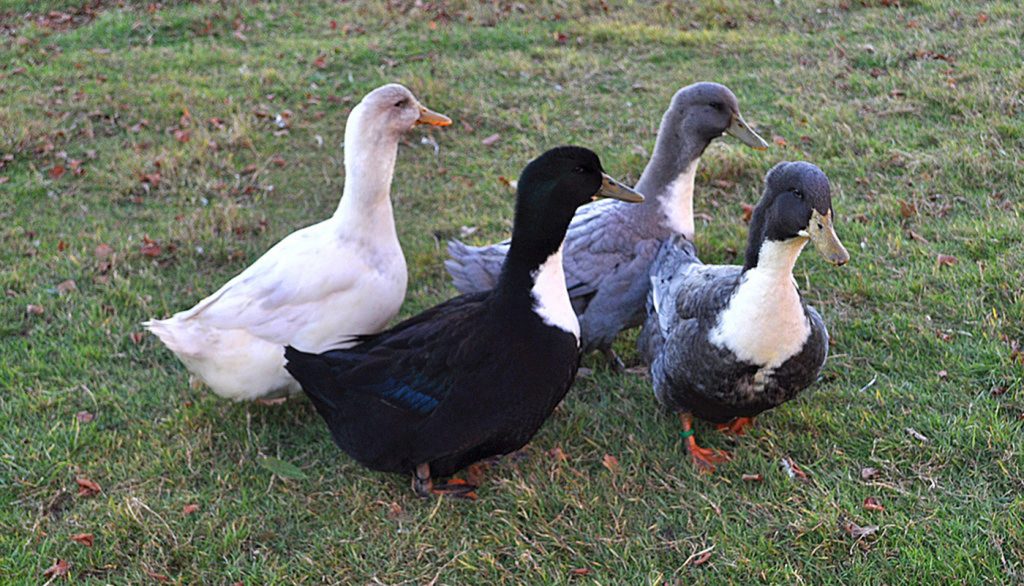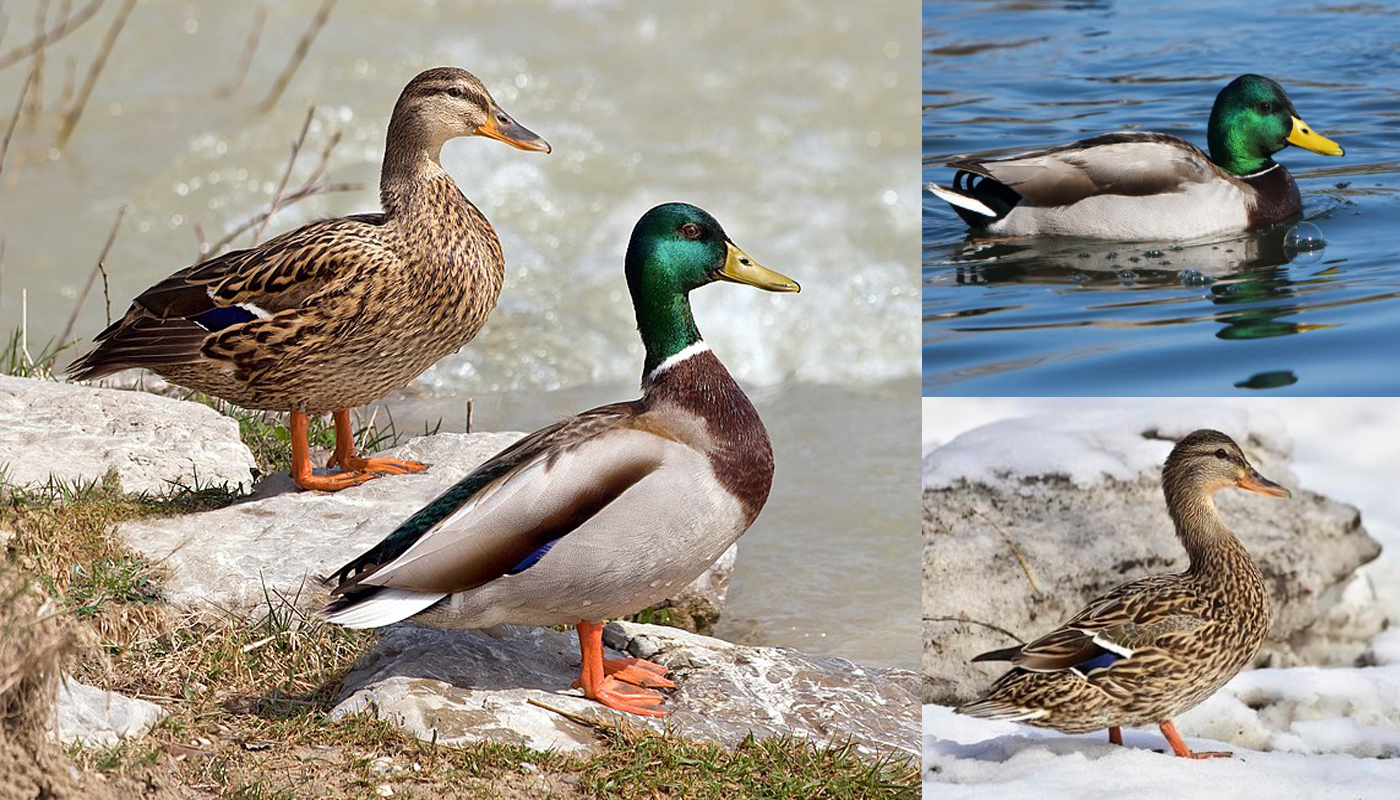
This beautiful duck breed with its black head and a white bib is a great addition to any back-garden duck flock.
As it is a medium sized duck that is an excellent forager it is a low maintenance breed. Easy to feed with a good disposition and full of quirky antics. The Swedish Blue with it’s beautiful feathering, calm, friendly even temperament that does mind being handled is a great starter duck.
It is also a good duck to have around children as it is really easy to handle and quite docile.
They lay a good number of eggs and they have the most amazing tasting lean meat if you are looking for a meat duck.
GENERAL INFORMATION |
|
|---|---|
| Country of Origin: | Germany |
| American Poultry Association: | yes Recognized by the American Poultry Association |
| Duck Category: | Medium |
| Duck Class: | German |
| Colors: | Blue, Date of acceptance: 1904 |
| Other known colors : | Black, Chocolate, Rust and Splash |
| Other names known by: | Blue Swedish or Swedish Duck |
| Good starter duck? | Yes |
| You may Also Like: | TOP 10 GOOD STARTER DUCK BREEDS |
| Bantam Variety Available? | No |
| You may Also Like: | 10 BEST BANTAM DUCK BREEDS |
APPEARANCE / IDENTIFICATION
| DUCK BITS | DESCRIPTION | COLOR | |||||||
|---|---|---|---|---|---|---|---|---|---|
| EYES⇒ | Same for M & F | Dark | |||||||
| BILL⇒ | Same for M & F | Slate Blue | |||||||
| Straight with a *Black bean tipped | |||||||||
| CRESTED? | No | ||||||||
| LEGS⇒ | Same for M & F | Slate blue | |||||||
| Legs are medium length, well positioned on the body much like the Campbell duck. They have irregular splotches of darker patches on them | |||||||||
| FEET⇒ | Same for M & F | Slate Blue | |||||||
| Splotches of darker blue on them | |||||||||
| WINGS⇒ | Same for M & F | Slate Blue | |||||||
| Wings have a deep purple sheen to them and are usually tipped with white | |||||||||
| FEATHERS⇒ | Same for M & F | Slate Blue | |||||||
| The male has a darker head with it almost having a green sheen to it. | |||||||||
| SKIN COLOR⇒ | Same for M & F | White | |||||||
| AVERAGE WEIGHT⇒ |
|
||||||||
| *Bean: This is also called the nail. It is a small round bump found at the end of the duck’s bill. It is used for defence and to catch insects. It is almost like a fingernail and is damaged can grow back. It can also get overgrown much like fingernails if they do not have something to grind it down on. | |||||||||
| ** Note: This is an average weight for the male duck and not a guaranteed weight | |||||||||
USE/PURPOSE |
||||||||||||||||||||||||||||||||||||
|---|---|---|---|---|---|---|---|---|---|---|---|---|---|---|---|---|---|---|---|---|---|---|---|---|---|---|---|---|---|---|---|---|---|---|---|---|
Females/Hens⇒ |
Eggs, Breeding, Show and Meat. They make a good starter duck and pet
|
|||||||||||||||||||||||||||||||||||
Males/Drakes⇒ |
Meat, Breeding, Show and pets
|
TEMPERAMENT |
|
|---|---|
| “They are calm, sweet a docile bird that is rather friendly” | |
| Good with Kids? | They can be good around supervised children |
| You may Also Like: | 10 BEST DUCK BREEDS TO KEEP AS FAMILY PET |
| Flyers? | They are not very good flyers and seldom even try to fly |
| Noisy Birds? | They are not that noisy they prefer to calmly sail around the place |
| Interact with other ducks? | They do not mind socializing with other duck friends |
| Best duck breeds to mix them with: | Any domesticated breed with mix nicely with the Swedish Blue |
| Other animals? | They are not too fussed about other domestic animals. But it is good to keep a close eye on dogs and cats. Especially dogs that are a hunting breed. |
IDEAL ENVIRONMENT |
|
|---|---|
| “They are quite acceptable ducks and will readily adapt to their environment” | |
| Ideal Garden Size? | Medium to large |
| Can be Confined? | But they do not like it |
| Free-Range | All ducks like to have the rule of the back garden |
| Penned Free-Ranging? | As long as there is fresh ground for finding new juicy treats |
| Foragers | They love to hunt for slugs and snails |
| Endures heat well | Yes |
| Endures cold well | Yes |
| Special Requirements? | No |
| Ideal Duck House: | Duck hutches should always be roomy enough to comfortably accommodate all your ducks without overcrowding. There must be good ventilation and insulation as well as the ability to make it safe and sound for them at night |
| Ideal Duck Pond: | They like a small shallow pond or splash pool to wade in |
| Flock/Paddling Size: | Always have at least two ducks. They do like to have duck friends to waddle about with |
| You may Also Like: | 22 Best DOMESTIC DUCK BREEDS |
GOOD TO KNOW |
|
|---|---|
| Special Care/Attention Requirements? | They have no special needs |
| Known Predators: | Check with animal control in your area for known predators |
| Conservations Status: | Not Listed For more information on poultry, conservation status, check the American Livestock Conservancy Website |
| Breeders Clubs: | It is best to check with the American Poultry Association for various clubs and or organizations. |
| Where to buy them: | Metzer Farms, Purely Poultry and check with your local poultry farms, the APA or check with the American Livestock Conservancy |
| Other: | If you do not want to risk having your ducks shipped check with your local poultry farms for advice on your nearest supplier. |
HISTORY
The blue ducks that are the foundation of the Blue Swedish duck were known to have existed in Pomerania in the early 1800’s. The Swedish duck came to light in around 1835 in Pomerania which in those years was part of the Kingdom of Sweden.
Blue ducks were said to be especially hardy with a superior meat quality. They were also less visible to predators as their colors made them harder to see.
This made the Blue duck varieties really popular in Europe for centuries.
The first Swedish Blue ducks were imported to America in 1884. They were included in the Standards of Perfection by the American Poultry Association in 1884.
They have since been quite a popular farm duck and dual-purpose utility bird although they tend to mature rather slowly.
Their fine quality of lean meat with its delectable flavor makes is a good meat bird. The duck lays around 150 large white or sometimes bluish-green tinted eggs per year.
It also makes quite a good pet as it is calm, friendly and can fend for itself pretty well with its love of foraging.
Swedish Blue ducks are one of the best breeds to have for a first-time duck owner as well as a good teaching duck for children. This is quite an old breed that has been around for a long time and is listed in the American Livestock Conservancy.
Health
No known health issues. They are also one of the hardiest of duck breeds
- Ducks need water to ensure they do not get “wet feather” disease. This is where the preening gland dries out. Water also stops them from getting pests such as mites, fleas, ticks, lice, etc.
- Well, fed ducks should hardly have any health issues.
- Any birds kept in a flock need to be dewormed. Although ducks are not as prone as other poultry they should still have a de-worming regime. Speak to a local vet or poultry experts for advice. Our article on Healthy Ducks has some great tips and advice on de-worming ducks.
 Saxony Duck Breed – Everything You Need to Know
Saxony Duck Breed – Everything You Need to Know Australian Spotted Duck Breed – Everything You Need to Know
Australian Spotted Duck Breed – Everything You Need to Know Mallard Duck Breed – Everything You Need to Know
Mallard Duck Breed – Everything You Need to Know Aylesbury Duck Breed – Everything You Need to Know
Aylesbury Duck Breed – Everything You Need to Know Indian Runner Duck Breed – Everything You Need to Know
Indian Runner Duck Breed – Everything You Need to Know Crested Duck Breed – Everything You Need to Know
Crested Duck Breed – Everything You Need to Know Orpington Duck Breed – Everything You Need to Know
Orpington Duck Breed – Everything You Need to Know Domestic Duck Breeds – Getting your Ducks in a Row! Part 2
Domestic Duck Breeds – Getting your Ducks in a Row! Part 2 Ancona Duck Breed – Everything You Need to Know
Ancona Duck Breed – Everything You Need to Know Magpie Duck Breed – Everything You Need to Know
Magpie Duck Breed – Everything You Need to Know Top 10 Domestic Ducks for the Backyard that also Make Good Starter Ducks
Top 10 Domestic Ducks for the Backyard that also Make Good Starter Ducks